Dinosaur asteroid hit 'worst possible place'
- Published
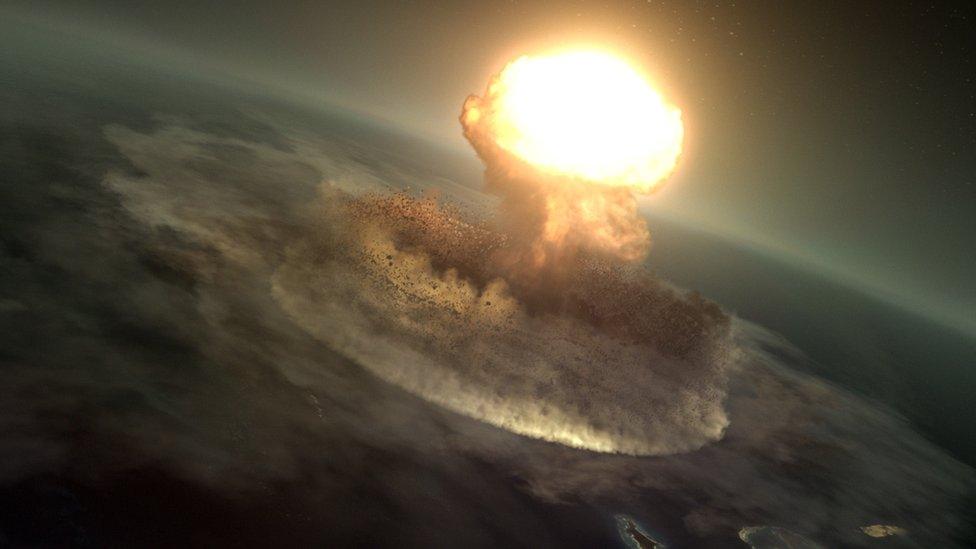
Artwork: The impact hit with the energy equivalent to 10 billion Hiroshima bombs
Scientists who drilled into the impact crater associated with the demise of the dinosaurs summarise their findings so far in a BBC Two documentary on Monday.
The researchers recovered rocks from under the Gulf of Mexico that were hit by an asteroid 66 million years ago.
The nature of this material records the details of the event.
It is becoming clear that the 15km-wide asteroid could not have hit a worse place on Earth.
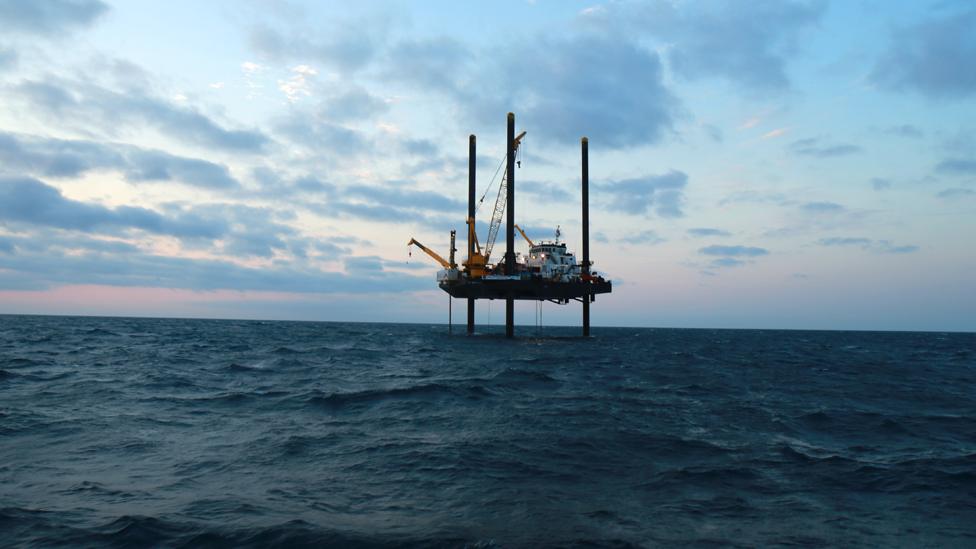
The drill rig was on station in the Gulf in April and May last year
The shallow sea covering the target site meant colossal volumes of sulphur (from the mineral gypsum) were injected into the atmosphere, extending the "global winter" period that followed the immediate firestorm.
Had the asteroid struck a different location, the outcome might have been very different.
"This is where we get to the great irony of the story – because in the end it wasn’t the size of the asteroid, the scale of blast, or even its global reach that made dinosaurs extinct – it was where the impact happened," said Ben Garrod, who presents The Day The Dinosaurs Died with Alice Roberts.

The fractured rocks were subjected to immense pressures
"Had the asteroid struck a few moments earlier or later, rather than hitting shallow coastal waters it might have hit deep ocean.
"An impact in the nearby Atlantic or Pacific oceans would have meant much less vaporised rock – including the deadly gypsum. The cloud would have been less dense and sunlight could still have reached the planet’s surface, meaning what happened next might have been avoided.
"In this cold, dark world food ran out of the oceans within a week and shortly after on land. With nothing to eat anywhere on the planet, the mighty dinosaurs stood little chance of survival."
Ben Garrod spent time on the drill rig that was stationed 30km off Mexico's Yucatan Peninsula in April/May last year, to better understand the aims of the project; Alice Roberts visited widely separated fossil beds in the Americas, to get a sense of how life was upended by the impact.
Rock cores from up to 1,300m beneath the Gulf were recovered.
The lowest sections of this material come from a feature within the crater called the peak ring.
This is made from rock that has been heavily fractured and altered by immense pressures.
By analysing its properties, the drill project team - led by Profs Jo Morgan and Sean Gulick - hope to reconstruct how the impact proceeded and the environmental changes it brought about.
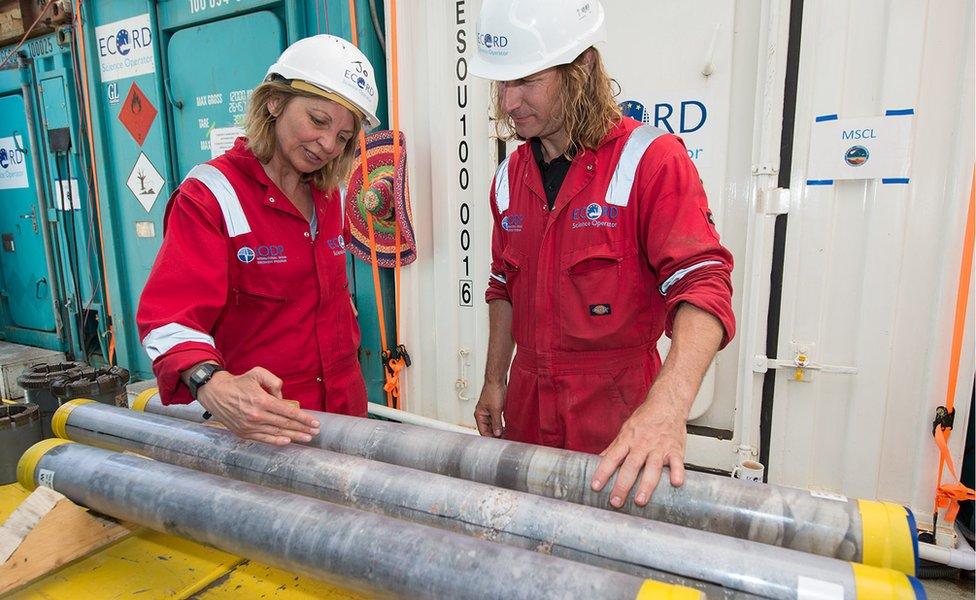
Co-lead scientists Jo Morgan (Imperial College London) and Sean Gulick (University of Texas)

Chicxulub Crater - The impact that changed life on Earth

The outer rim (white arc) of the crater lies under the Yucatan Peninsula itself, but the inner peak ring is best accessed offshore
A 15km-wide object dug a hole in Earth's crust 100km across and 30km deep
This bowl then collapsed, leaving a crater 200km across and a few km deep
The crater's centre rebounded and collapsed again, producing an inner ring
Today, much of the crater is buried offshore, under 600m of sediments
On land, it is covered by limestone, but its rim is traced by an arc of sinkholes
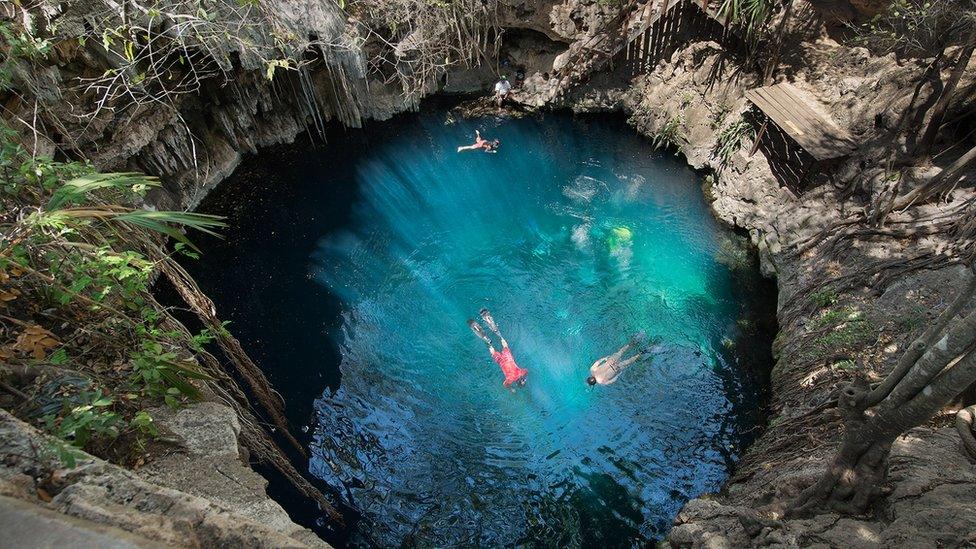
Mexico's famous sinkholes (cenotes) have formed in weakened limestone overlying the crater

They know now the energy that went into making the crater when the asteroid struck - equivalent to 10 billion Hiroshima A-bombs. And they also understand how the depression assumed the structure we observe today.
The team is also gaining insights into the return of life to the impact site in the years after the event.
One of the many fascinating sequences in the BBC Two programme sees Alice Roberts visit a quarry in New Jersey, US, where 25,000 fossil fragments have been recovered - evidence of a mass die-off of creatures that may have been among the casualties on the day of the impact itself.
"All these fossils occur in a layer no more than 10cm thick," palaeontologist Ken Lacovara tells Alice.
"They died suddenly and were buried quickly. It tells us this is a moment in geological time. That's days, weeks, maybe months. But this is not thousands of years; it's not hundreds of thousands of years. This is essentially an instantaneous event."
The Day The Dinosaurs Died is on BBC Two at 21:00, after which it will be available on the BBC iPlayer.
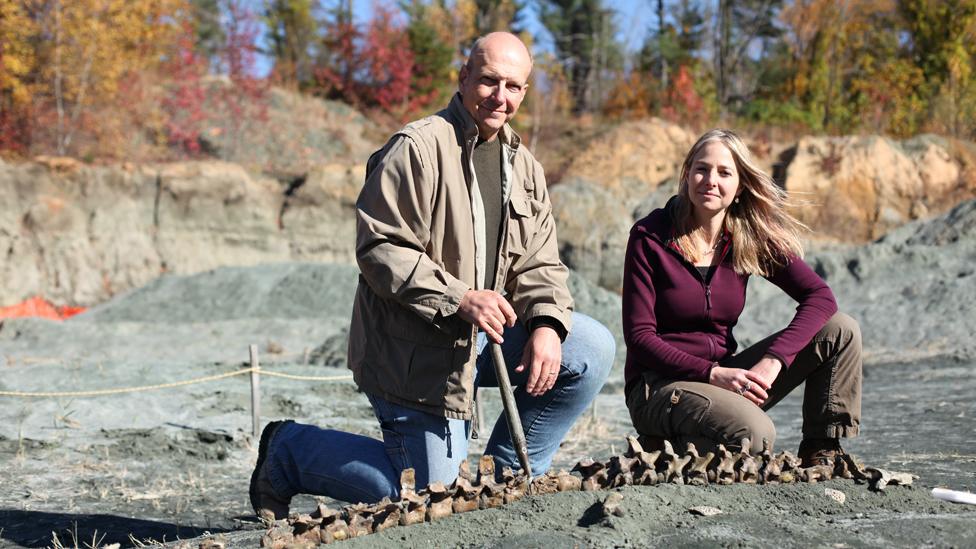
Alice visited a New Jersey quarry with palaeontologist Ken Lacovara
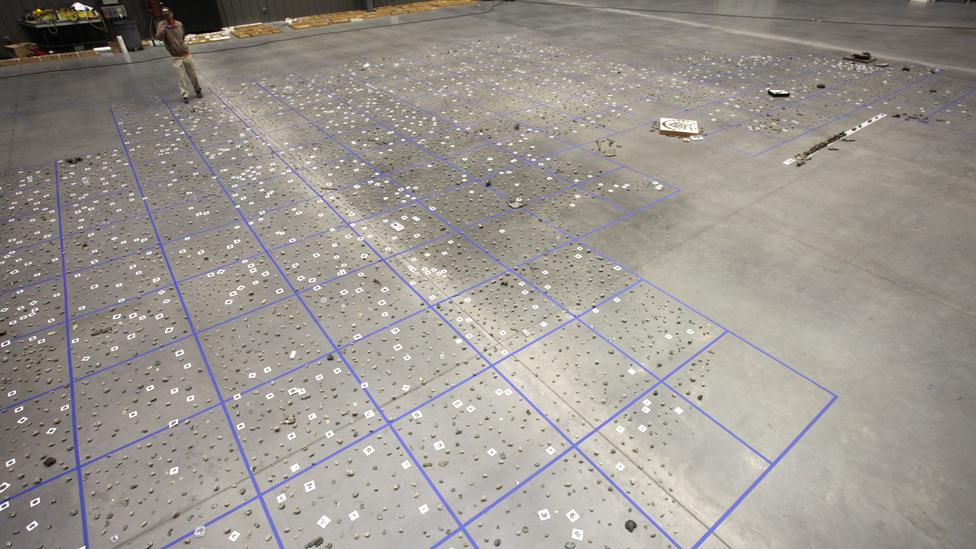
Some of the 25,000 fossil fragments are laid out in a large room